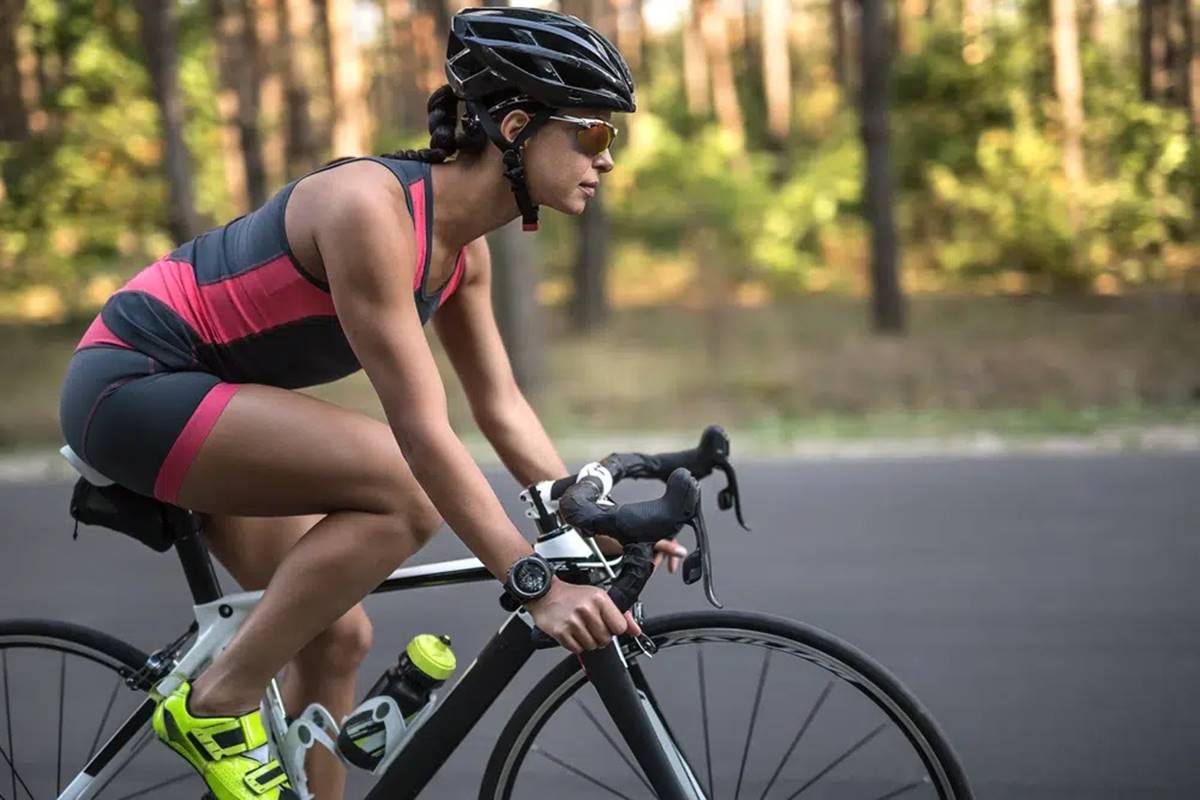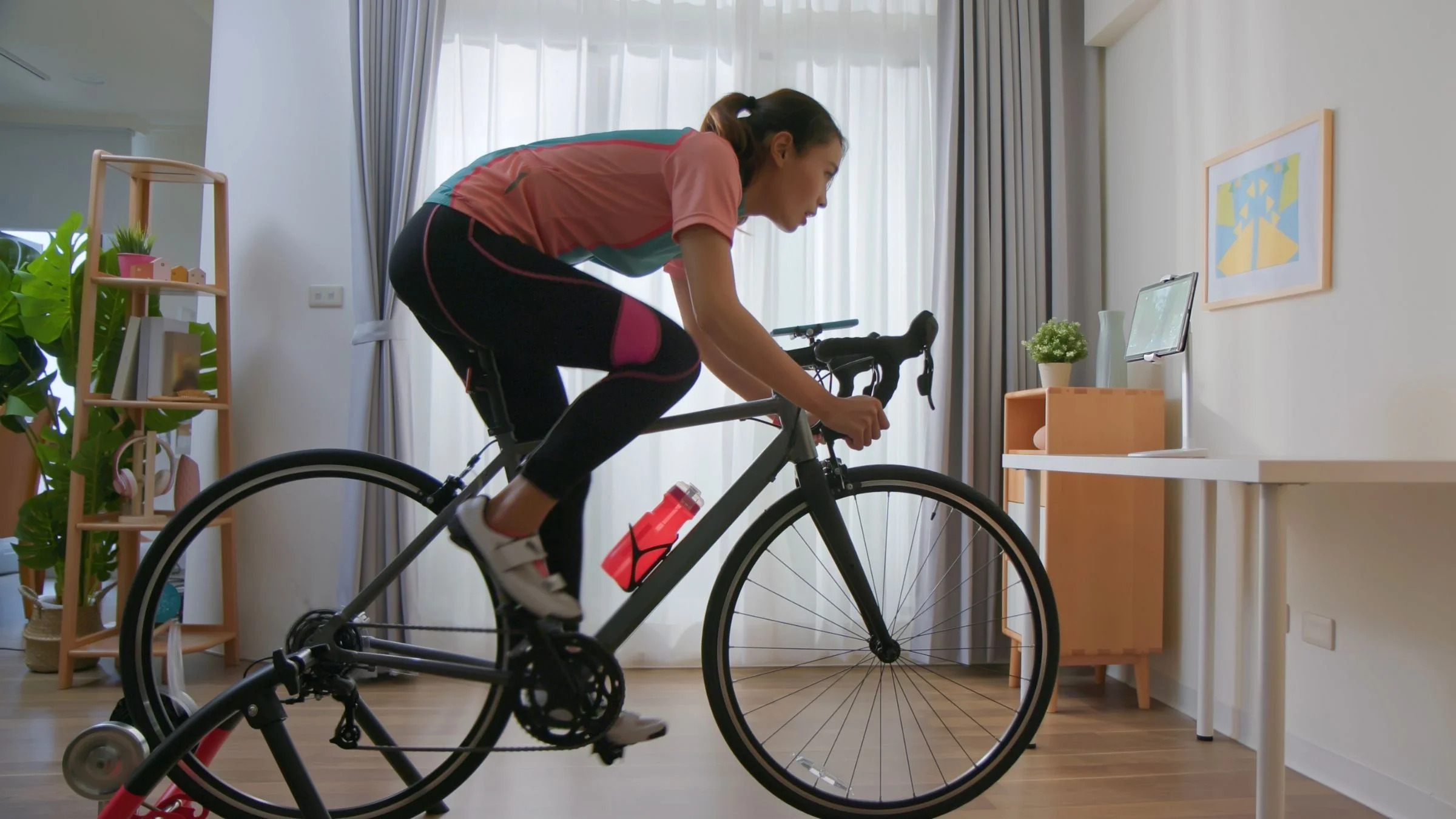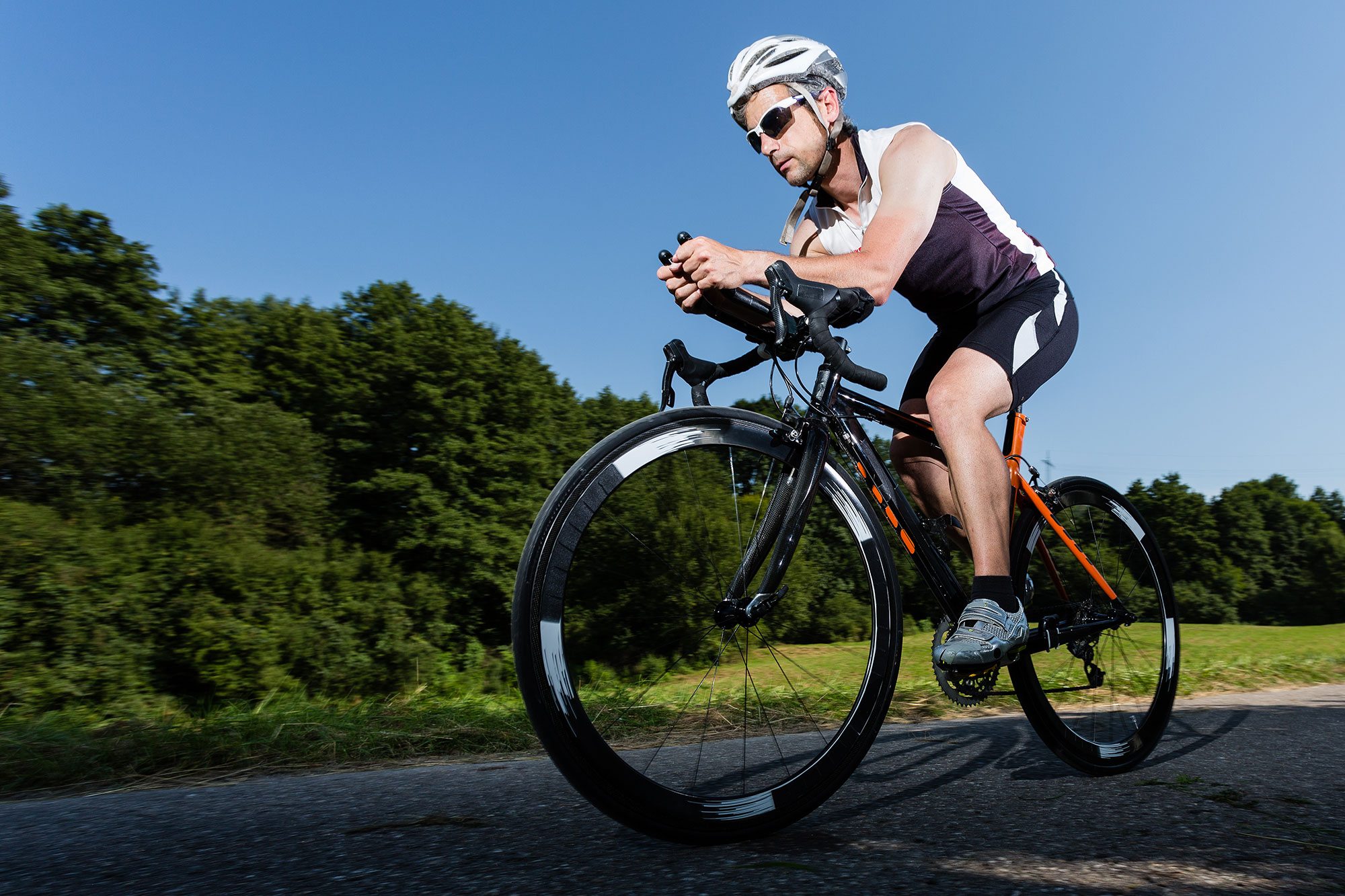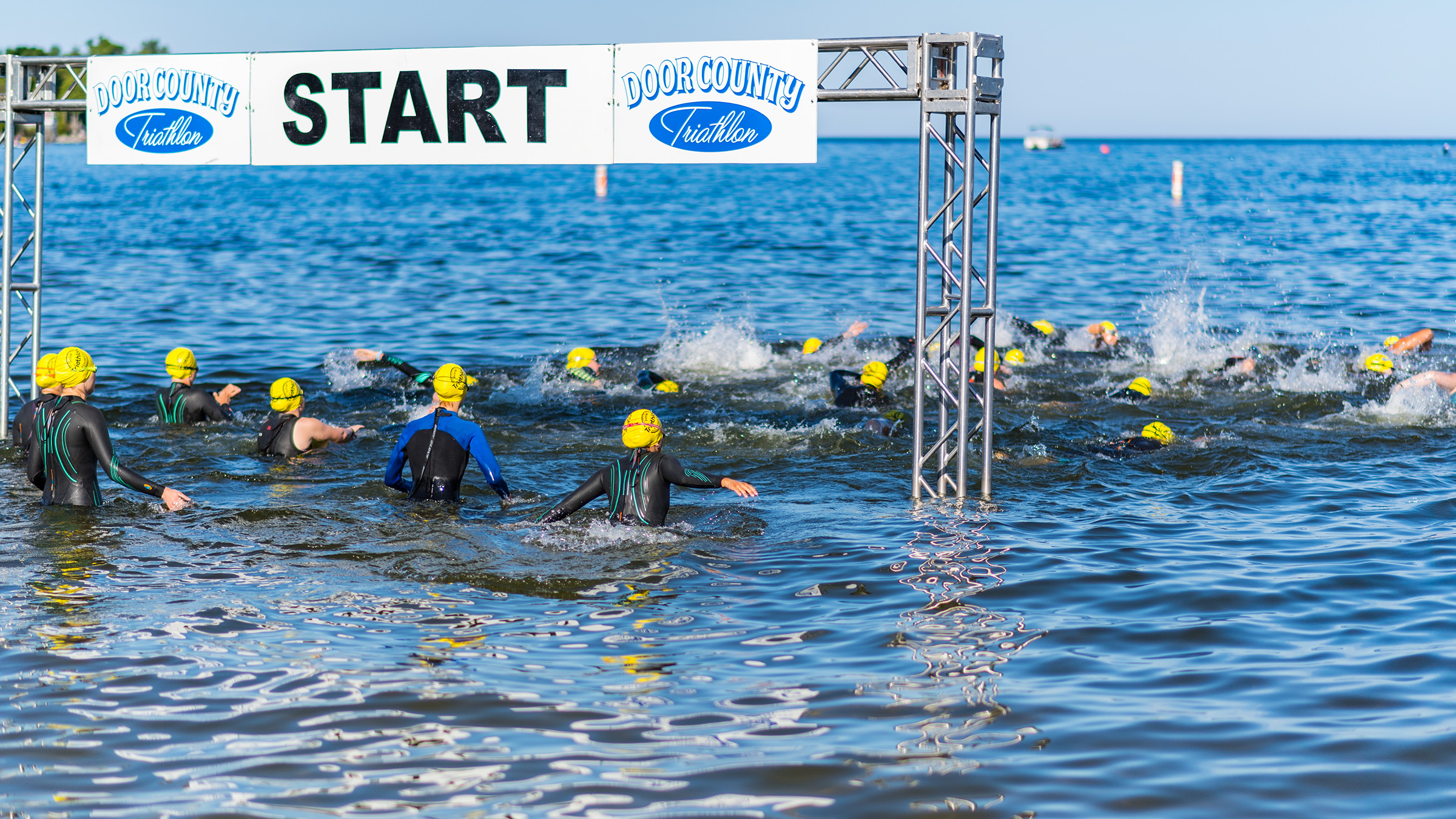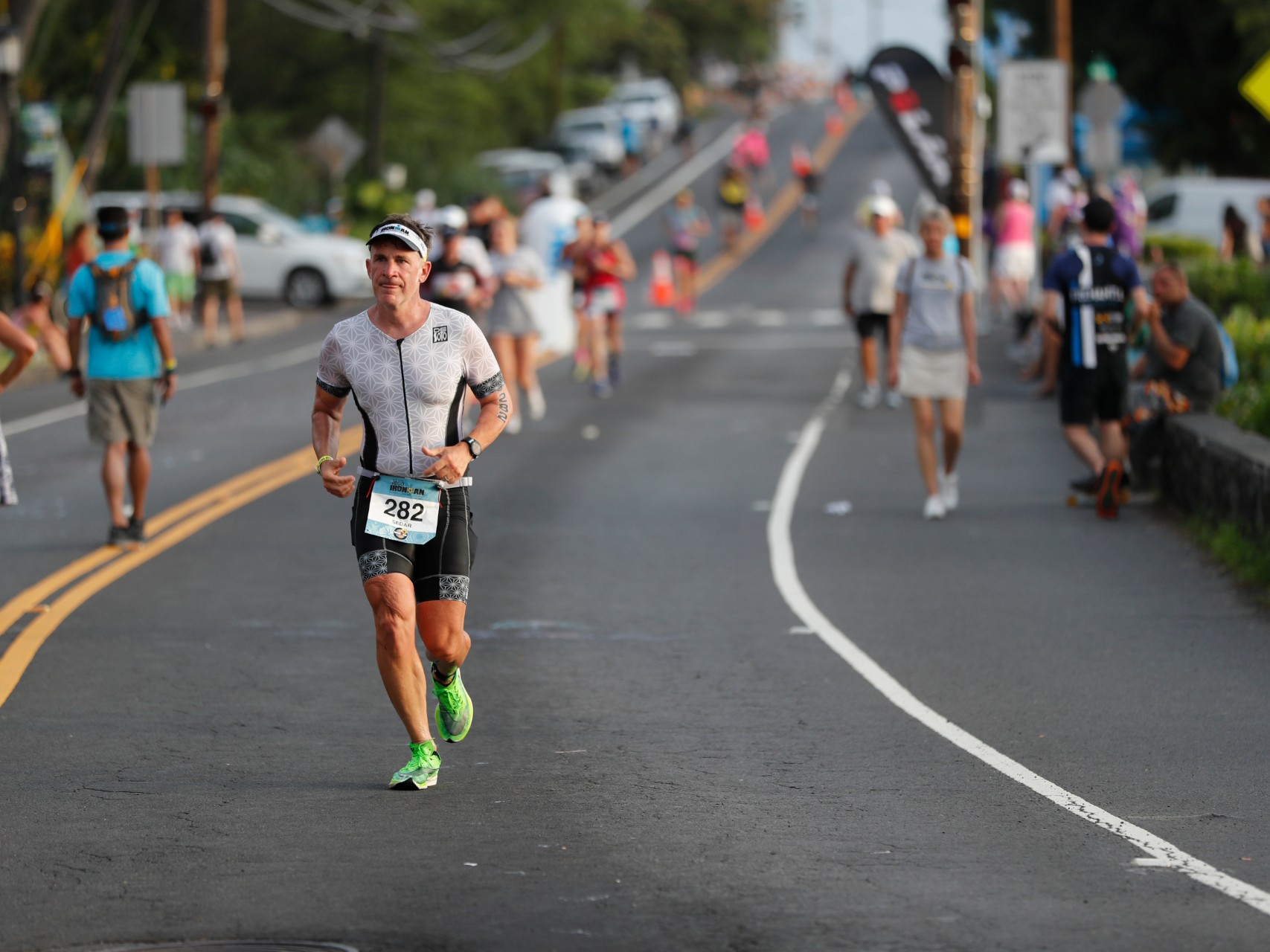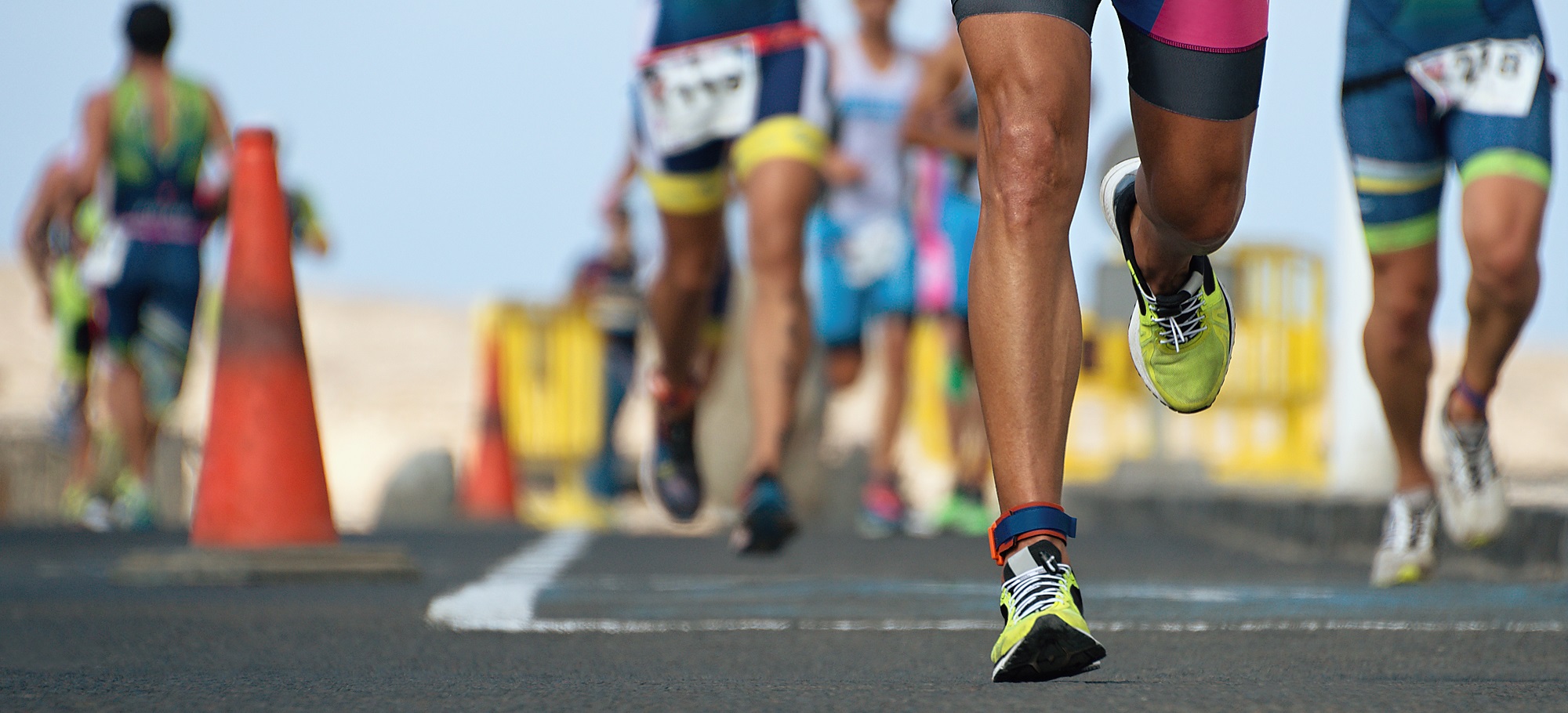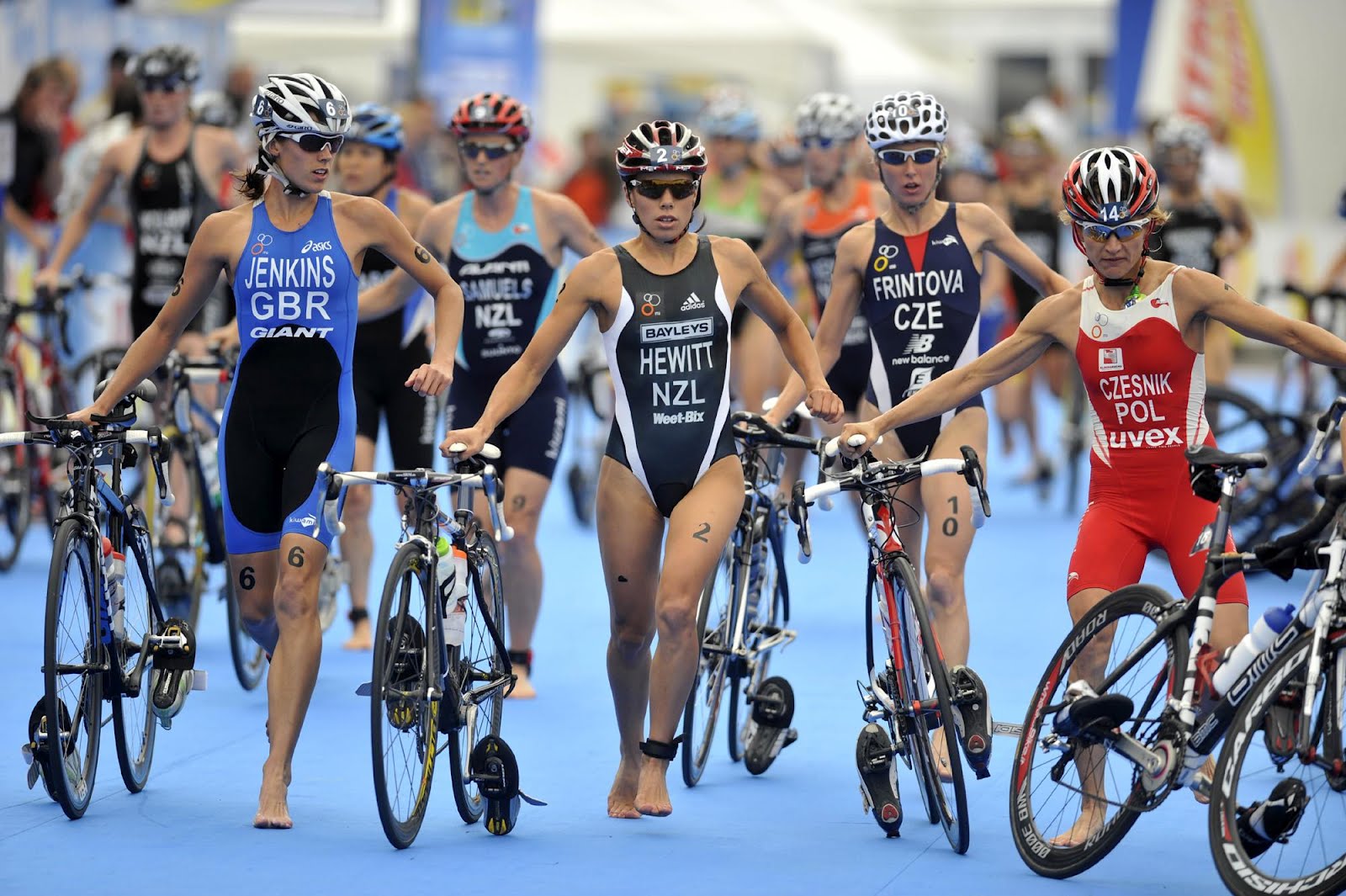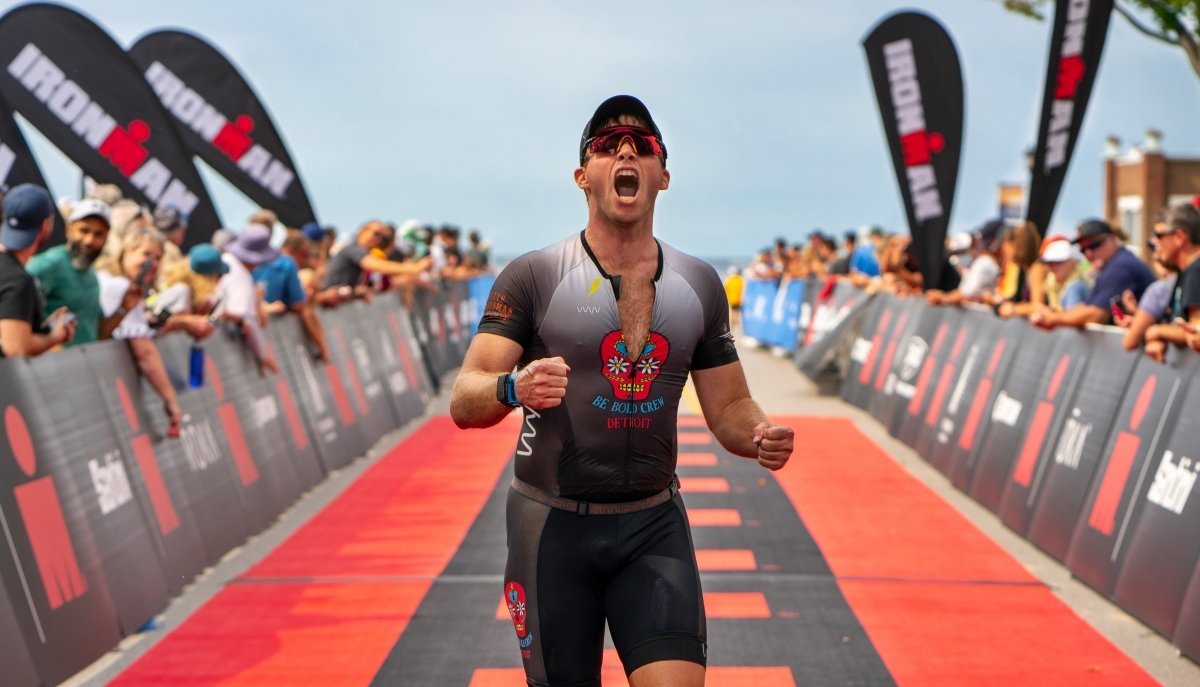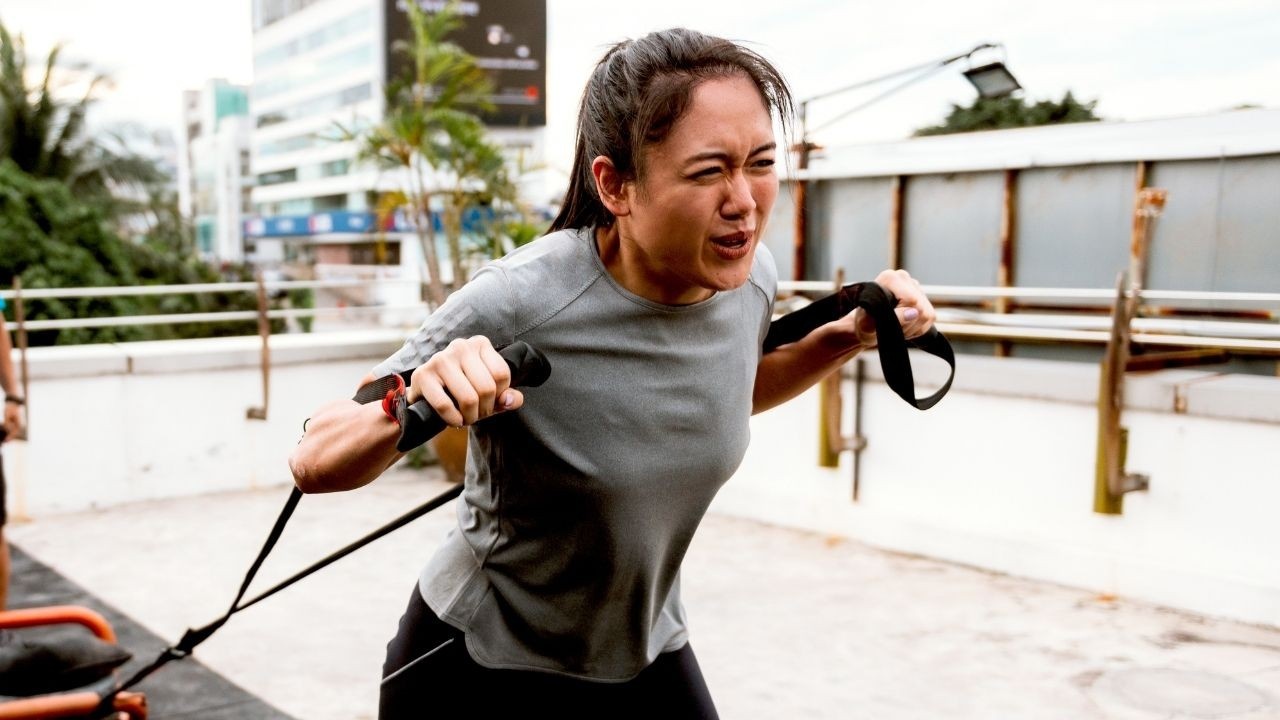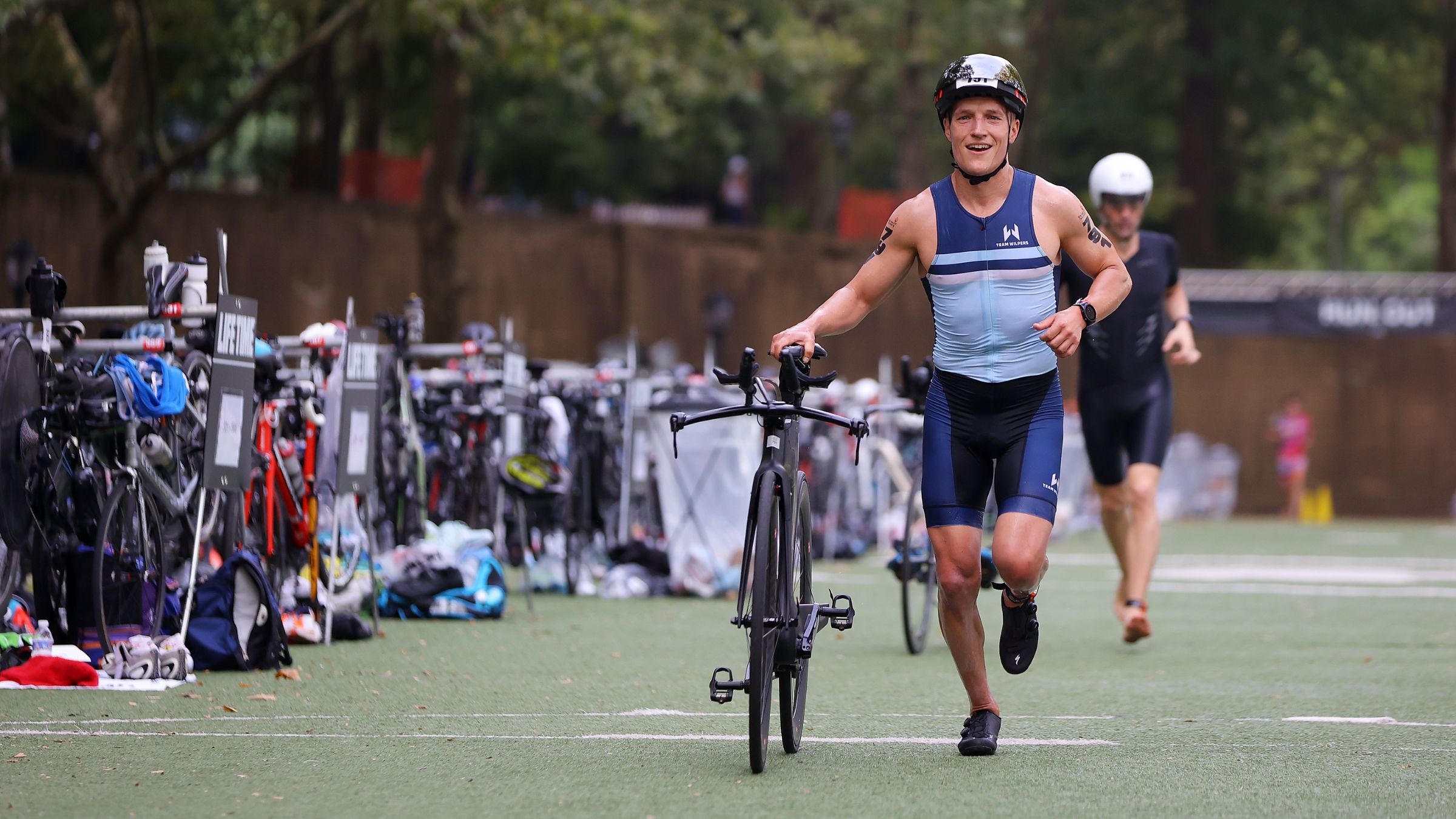Home>Misc>Featured>What Kind Of Bike Do I Need For A Triathlon
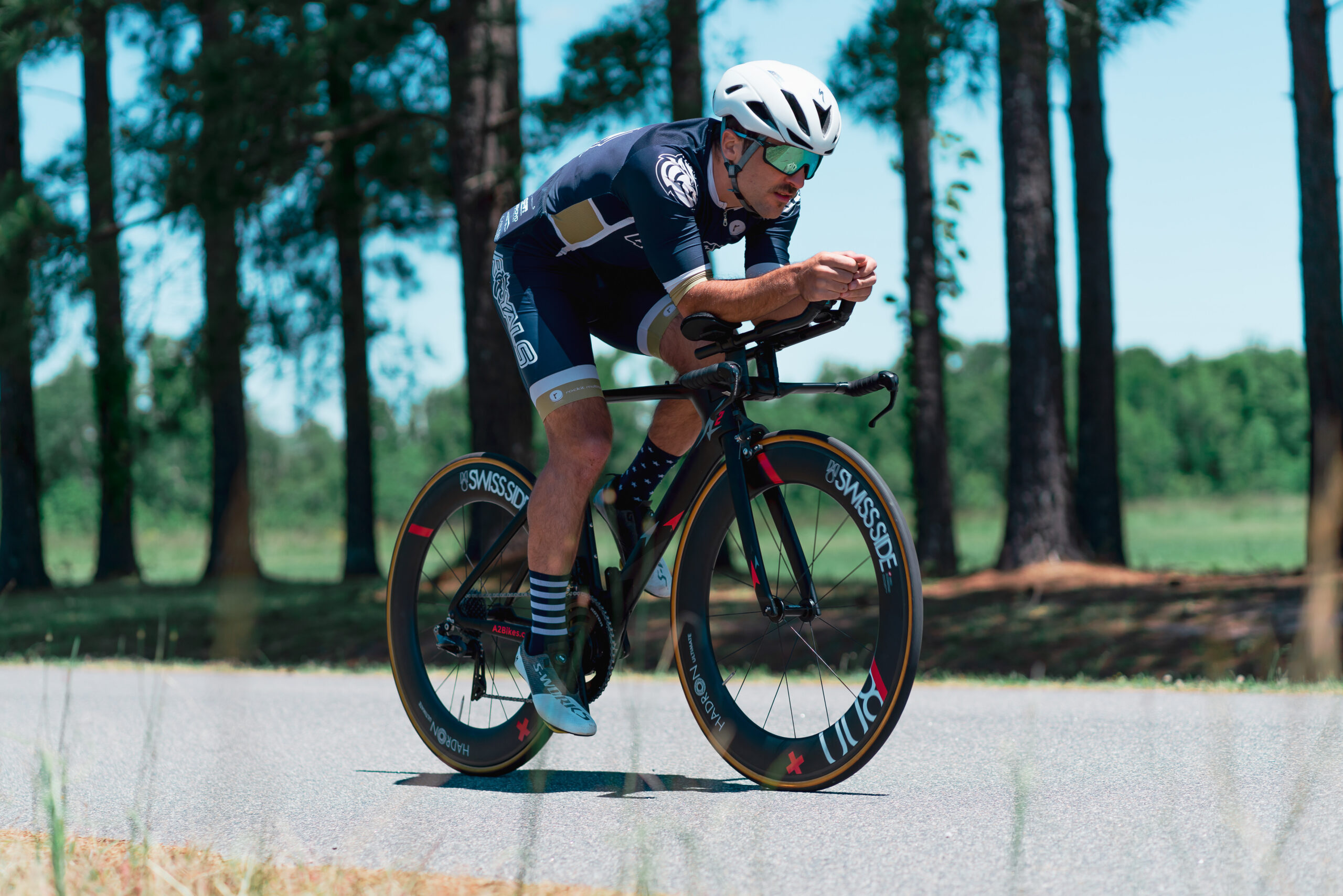

Featured
What Kind Of Bike Do I Need For A Triathlon
Modified: January 2, 2024
Featured: Find the perfect bike for your upcoming triathlon. Discover the ideal kind of bike to conquer all terrains and optimize your performance.
Introduction
Participating in a triathlon is an exhilarating and challenging endeavor that combines swimming, cycling, and running into one ultimate athletic event. To successfully complete a triathlon, it’s essential to have the right equipment, including a suitable bike. When it comes to choosing a bike for a triathlon, many factors come into play, such as the race distance, terrain, personal preferences, and budget.
Triathlons offer different race distances, ranging from sprint to Ironman. The longer the race, the more important it becomes to have a bike that is comfortable and efficient for the duration of the event. Whether you’re a beginner just starting out or a seasoned triathlete looking to upgrade your gear, selecting the right bike can greatly impact your performance and overall triathlon experience.
In this article, we will delve into the different types of bikes suitable for triathlons, the factors to consider when choosing one, and how to prepare and train for a triathlon. By the end, you’ll have a better understanding of what kind of bike you need for a triathlon and be ready to embark on this exciting journey.
Choosing the Right Bike
Choosing the right bike for a triathlon is crucial for your race performance and overall enjoyment. With several bike options available in the market, it’s important to consider your specific needs and goals before making a decision. Here are some key factors to keep in mind when selecting your triathlon bike.
1. Race Distance: The first step in choosing a bike is understanding the race distance you’ll be participating in. Sprint and Olympic distance triathlons typically involve shorter bike segments and can be completed on a road bike. However, for longer distances like half Ironman or Ironman, investing in a specialized triathlon bike or a time trial bike is recommended for better aerodynamics and comfort.
2. Terrain: Consider the terrain of the triathlon course. If it’s a flat and fast course, a bike with aero characteristics and good power transfer would be advantageous. On the other hand, if the course involves hilly routes, a bike with a wider range of gears and good climbing ability would be beneficial.
3. Personal Preferences: Take your personal preferences into account when choosing a bike. Consider factors such as frame material (carbon, aluminum, or steel), bike geometry (aggressive or endurance), and brand reputation. These factors can influence your comfort, handling, and overall performance on the bike.
4. Budget: Determine your budget for the bike purchase. Triathlon bikes can range from affordable entry-level models to high-end and more expensive options. It’s important to strike a balance between quality and affordability. Consider investing in a bike that provides the necessary features and fits within your budget.
By carefully considering these factors and analyzing your specific needs, you can choose the right bike that aligns with your triathlon goals and preferences. Once you have the appropriate bike, it’s essential to focus on bike fit, comfort, and proper training to optimize your performance during the race.
Understanding Triathlon Bike Types
When it comes to triathlon bikes, there are several types to choose from. Each type has its own unique features and advantages. Understanding these differences can help you make an informed decision about which bike is best suited for your needs.
Road Bikes: Road bikes are the most common type of bike used in triathlons, especially for shorter distance races. These bikes are versatile, lightweight, and designed for efficiency on paved roads. They offer a comfortable riding position, good handling, and a wide range of gears for various terrains. Road bikes are a great option for beginners or athletes looking for a more budget-friendly choice.
Time Trial Bikes: Time trial (TT) bikes, also known as “aero” bikes, are specifically designed for maximum aerodynamics. They feature a more aggressive riding position with elongated tubes, aero handlebars, deep-section wheels, and an integrated cockpit. TT bikes excel in flat and fast courses, reducing wind resistance and improving speed. The downside is that they may be less comfortable for longer distances and have limited maneuverability compared to road bikes.
Triathlon-specific Bikes: Triathlon-specific bikes are a hybrid between road and time trial bikes, offering a balance between aerodynamics and comfort. These bikes often have a steeper seat tube angle and integrated storage to optimize aerodynamics and convenience during races. Triathlon bikes are an excellent choice for athletes aiming to improve their race times and are suitable for both short and long distance triathlons.
When selecting a bike for a triathlon, it’s essential to consider the race distance, terrain, and personal preferences. If you’re unsure which type of bike is best for you, consulting with a knowledgeable bike specialist or coach can help you make an informed decision based on your specific needs and goals.
Road Bikes
Road bikes are a popular choice for triathletes, especially in shorter distance races. These versatile bikes are designed for efficiency on paved roads and offer a comfortable riding position and excellent handling. Here are some key features and advantages of road bikes for triathlons.
Lightweight and Agile: Road bikes are typically made from lightweight materials such as carbon fiber or aluminum, making them easy to maneuver and accelerate. This allows for quick acceleration out of corners or during sprints, which can be advantageous in triathlon races.
Comfortable Riding Position: Road bikes usually offer a more relaxed and upright riding position compared to time trial or triathlon-specific bikes. This can be beneficial, especially for longer distance races, as it reduces stress on the back and shoulders and provides better comfort throughout the bike leg of the triathlon.
Wide Range of Gears: Road bikes are equipped with a wide range of gears, allowing riders to easily adapt to different terrains and gradients. This is particularly useful in hilly courses where gear ratios can be adjusted to suit the rider’s preferences and capabilities.
Versatility: Road bikes are not limited to triathlon races. They can also be used for training rides, group rides, and even non-competitive events like charity rides or gran fondos. Their versatility and adaptability make them a great investment for triathletes who want a bike that can serve multiple purposes.
It’s important to note that while road bikes are suitable for shorter distance triathlons, they may not be the best choice for longer distances where aerodynamics play a more significant role. For longer triathlons, considering a time trial or triathlon-specific bike may provide a competitive advantage.
When choosing a road bike for a triathlon, ensure proper bike fit and consider components such as the gear set, brakes, and wheelset. Investing in quality components can enhance performance and ensure a smooth ride.
Overall, road bikes are an excellent option for triathletes, especially beginners or those participating in shorter distance races. Their lightweight construction, comfortable riding position, and versatility make them a reliable choice for individuals looking to enter the world of triathlon while enjoying the benefits of a high-quality road bike.
Time Trial Bikes
Time trial (TT) bikes, also known as “aero” bikes, are specifically designed for maximum aerodynamics. These bikes are a popular choice for triathletes in flat and fast races, where reducing wind resistance and improving speed are paramount. Here are some key features and advantages of time trial bikes.
Aerodynamic Design: Time trial bikes are built with an aerodynamic design in mind. They have elongated tubes, aero handlebars, deep-section wheels, and an integrated cockpit. These features help to minimize wind resistance and improve efficiency, allowing triathletes to go faster with less effort.
Aggressive Riding Position: Time trial bikes have a more aggressive riding position compared to road bikes. The rider is positioned lower and closer to the front of the bike, reducing the rider’s frontal area and further enhancing aerodynamics. However, this aggressive position may be less comfortable for some riders, particularly during longer triathlons.
Integrated Features: Time trial bikes often come with integrated features such as storage compartments for nutrition, hydration, and mechanical tools. These integrated solutions help to streamline the bike and reduce aerodynamic drag by eliminating additional attachments.
Speed and Efficiency: Due to their aerodynamic design and optimized riding position, time trial bikes excel in flat and fast courses. They allow triathletes to maintain high speeds, conserve energy, and improve overall race performance.
While time trial bikes offer significant advantages in terms of aerodynamics and speed, it’s important to note that they may not be as versatile as road bikes. The aggressive position and limited handling can make time trial bikes less suitable for hilly or technical courses where maneuverability and control are essential.
When considering a time trial bike, fit and comfort are crucial. The bike should be properly adjusted to ensure the rider can maintain an aero position comfortably for an extended period. Additionally, choosing the right components, including the gear set, brakes, and wheels, can further optimize performance on a time trial bike.
Time trial bikes are a popular choice for experienced triathletes who prioritize speed and performance in flat and fast races. Their aerodynamic design and aggressive riding position make them a top choice for individuals looking to maximize their potential on the bike leg of a triathlon.
Triathlon-specific Bikes
Triathlon-specific bikes are designed with the specific needs of triathletes in mind. These bikes offer a balance between aerodynamics, comfort, and convenience, making them an excellent choice for individuals aiming to improve their race times and overall performance. Here are some key features and advantages of triathlon-specific bikes.
Optimized Aerodynamics: Triathlon bikes are built with a focus on aerodynamics, allowing for faster speeds and reduced wind resistance. They feature a steeper seat tube angle, which positions the rider further forward to optimize aerodynamics while maintaining a comfortable riding position.
Integrated Storage Solutions: Triathlon bikes often come with integrated storage solutions, such as aerodynamic frame bags, hydration systems, and bento boxes. These storage options allow triathletes to carry nutrition, hydration, spare tubes, and tools without compromising aerodynamics.
Aerobars and Extensions: Triathlon-specific bikes typically come equipped with aerobars and adjustable extensions. These handlebar configurations enable triathletes to adopt a more aerodynamic riding position by placing their forearms on the pads and reducing frontal area, resulting in improved speed and efficiency.
Comfortable and Efficient: While triathlon bikes prioritize aerodynamics, they also prioritize comfort and efficiency. The geometry of these bikes allows for a comfortable riding position that minimizes strain on the muscles and joints, improving comfort during the bike leg of a triathlon.
Fit for Both Short and Long Distances: Triathlon-specific bikes are suitable for both short and long distance races. Whether you’re participating in a sprint triathlon or an Ironman, these bikes provide the necessary features and characteristics to optimize performance and enhance your overall race experience.
When considering a triathlon-specific bike, it’s essential to ensure a proper bike fit. Triathlon bike fit differs from regular road bike fit due to the more aggressive position and specialized geometry. Consulting with a professional bike fitter can help ensure you’re positioned optimally for comfort and performance.
Triathlon-specific bikes are an excellent choice for serious triathletes who want to enhance their race performance. Their streamlined design, integrated storage solutions, and comfortable riding position make them an ideal option for individuals looking for a bike that excels in both speed and convenience during triathlon races.
Factors to Consider
When choosing a bike for a triathlon, there are several important factors to consider. These factors will help you determine the right bike that suits your needs, goals, and budget. Here are the key factors to keep in mind when making your decision.
Bike Fit and Comfort: One of the most critical factors is ensuring the bike fits you properly and provides optimal comfort. A bike that is too big or too small can lead to discomfort, muscle strain, and a decrease in performance. Consider getting a professional bike fit to ensure the bike’s geometry is suited to your body dimensions and riding style.
Aerodynamics: Aerodynamics play a significant role in triathlon races, especially for longer distances. The more aerodynamic the bike, the less wind resistance you’ll face, resulting in greater speed and improved overall performance. Look for a bike with an aerodynamic design, including features like specialized frame shapes and aerodynamic handlebars.
Handling and Control: The handling and control of the bike are crucial, particularly if you’ll be facing technical or challenging terrain. Choose a bike that offers stability and responsive handling, allowing you to navigate corners, descents, and tight turns with confidence.
Gearing and Components: The gearing and components of the bike determine your ability to tackle different terrains and maintain optimal pedaling cadence. Consider the gear range and the quality of components such as the drivetrain, brakes, and wheels. Opt for a bike with a wide range of gear options and high-quality components that can withstand the demands of a triathlon.
Budget Considerations: Your budget will also play a role in the bike you choose. Determine how much you’re willing to invest and balance that with the features and quality you require. It’s important to find a bike that provides good value for your money and meets your needs without breaking the bank.
By carefully considering these factors, you’ll be able to identify the bike that best aligns with your desired performance, comfort, and budget. Remember to conduct research, visit bike shops, and consult with experienced cyclists or triathletes to gather insights and make an informed decision.
Bike Fit and Comfort
When it comes to choosing a bike for a triathlon, ensuring proper bike fit and optimal comfort is of utmost importance. A well-fitted bike not only enhances performance but also reduces the risk of injury and discomfort during training and racing. Here are some key considerations for bike fit and achieving ultimate comfort on your triathlon bike.
Professional Bike Fit: Investing in a professional bike fit is highly recommended. A professional bike fitter will take into account your body measurements, flexibility, riding style, and goals to ensure that your bike is adjusted to fit your unique requirements. They will assess and optimize the bike’s geometry, including saddle height, reach to the handlebars, and pedal position.
Saddle Choice: The saddle is a crucial component that directly impacts comfort during long rides. It’s essential to find a saddle that suits your body shape and preferences. Some bike shops offer saddle fitting services or have demo saddles available to try before making a purchase.
Handlebar Position: The handlebar position affects your riding posture and comfort. The height and reach of the handlebars should be adjusted based on your flexibility and riding goals. Triathlon-specific bikes typically have aerobars or aero extensions that allow for a more aerodynamic position, but this can be less comfortable for some riders over longer distances. Finding the right balance between aerodynamics and comfort is key.
Frame Size and Geometry: Choosing the correct frame size and geometry is crucial for comfort and efficient power transfer. A frame that is too big or too small can lead to excessive strain on certain muscle groups or restricted movement. It’s important to consider factors such as your height, inseam length, and riding style when selecting the appropriate frame size.
Cycling Apparel: The right cycling apparel can greatly contribute to overall comfort. Invest in quality cycling shorts with padding, a moisture-wicking jersey, and properly fitted cycling shoes. Choosing the right clothing will minimize friction, provide support, and aid in temperature regulation during your rides.
Regular adjustments and fine-tuning may be necessary as you become more accustomed to your bike and gain experience. Listen to your body and make any necessary modifications to ensure ongoing comfort and efficiency on the bike.
Remember, every individual is different, and what works for one person may not work for another. It’s essential to prioritize your personal comfort and seek professional guidance to achieve the best bike fit possible. A properly fitted bike will maximize your performance potential and allow you to focus on training and excelling in your triathlon pursuits.
Aerodynamics
In the world of triathlon, aerodynamics play a crucial role in optimizing performance and efficiency. The more aerodynamic your bike setup, the less energy you’ll expend battling wind resistance and the faster you’ll be able to ride. Here are some key factors to consider when it comes to aerodynamics in triathlon:
Bike Frame and Design: The frame design of your bike plays a significant role in reducing drag. Look for bikes with aerodynamic tube shapes, such as teardrop-shaped tubes, to minimize turbulence and maximize speed. Additionally, some manufacturers incorporate features like hidden cables and integrated storage solutions to further enhance aerodynamics.
Aero Handlebars: Aero handlebars, commonly known as aerobars, allow you to adopt a more aerodynamic position by resting your forearms on the pads. This reduces your frontal area and drag, resulting in improved speed. Experiment with different aerobar positions and angles to find the most efficient and comfortable setup for your body.
Positioning and Body Posture: Your body position and posture on the bike have a significant impact on aerodynamics. Aim to be low at the front end of the bike with a flat back and bent elbows. Minimize air resistance by keeping your head down and aligned with your spine. Practice maintaining this position during training to develop adequate core strength and flexibility.
Wheel Selection: Wheels can contribute to both the weight and aerodynamics of your bike. Deep-section carbon wheels are popular choices for triathlon due to their aerodynamic advantages. These wheels are designed to cut through the wind more efficiently, reducing drag and improving overall speed. However, it’s important to consider factors like crosswinds and the course terrain when selecting the most appropriate wheel depth.
Helmet and Clothing: Choosing an aerodynamic helmet and wearing tight-fitting, aerodynamic cycling clothing can further reduce drag. Aero helmets are designed to streamline airflow around your head, while tight-fitting clothing eliminates excess fabric flapping in the wind. These small details can make a notable difference in your overall aerodynamic profile.
It’s important to note that achieving optimal aerodynamics should not come at the expense of comfort and power output. Finding the right balance between aerodynamics and comfort is key. Experiment with different setups, seek expert advice, and conduct wind tunnel or field testing if possible to refine your aerodynamic position.
Remember, improvements in aerodynamics are incremental, and small gains can add up over the course of a triathlon. Pay attention to the details, invest in aerodynamic components where appropriate, and practice maintaining an efficient position to reap the benefits of reduced drag and enhanced performance in your triathlon events.
Handling and Control
Handling and control are crucial factors to consider when choosing a bike for triathlon. The ability to maneuver effectively through corners, descents, and varying road conditions can greatly impact your overall performance and safety. Here are some key points to consider when it comes to handling and control:
Geometry: The geometry of the bike plays a significant role in handling and control. Bikes with more relaxed geometry have a more upright riding position and are generally more stable, making them ideal for long-distance triathlons or courses with technical sections. Bikes with more aggressive geometry, on the other hand, offer sharper handling and are better suited for racing and shorter, more intense events.
Stability: Stability is vital, especially when riding at high speeds. Look for a bike with a stable frame that provides a solid platform for cornering and descending. A bike with a longer wheelbase and a lower center of gravity will typically offer greater stability and control.
Handling Responsiveness: Responsiveness refers to how quickly the bike responds to the rider’s input. A bike with responsive handling allows for quick and precise steering, enhancing your ability to navigate tight turns and make quick corrections. Test ride different bikes to get a feel for their handling responsiveness and find one that suits your preferences and riding style.
Braking System: An efficient and reliable braking system is essential for maintaining control, especially during descents or in wet conditions. Look for a bike with high-quality brakes that offer confident stopping power and modulation. Consider disc brakes, which typically provide better braking performance and improved control compared to traditional rim brakes.
Tire Selection: The type and size of tires you choose can impact handling and control. Wider tires offer better stability and grip, particularly on rough roads or off-road sections. However, they may come with a slight tradeoff in terms of aerodynamics. Consider the specific demands of your triathlon course and choose tires that offer the best balance of grip, speed, and comfort.
Practice and Technique: While choosing the right bike is important, developing good handling skills and technique is equally essential. Regularly practice riding in various conditions, including corners, descents, and uneven surfaces. Work on your bike handling skills to become more confident and efficient in controlling and maneuvering your bike.
Ultimately, finding a bike with handling qualities that inspire confidence is crucial. Consider your experience level, the technical nature of the courses you’ll be riding, and your personal preferences when selecting a bike. By prioritizing handling and control, you can enhance your performance and enjoy a safer and more enjoyable ride during your triathlon events.
Gearing and Components
Gearing and components are important considerations when choosing a bike for triathlon. The right gear ratios and high-quality components can greatly enhance your performance and enjoyment during training and races. Here are some key points to consider when it comes to gearing and components:
Gear Ratio: The gear ratio refers to the relationship between the number of teeth on the front and rear gears. Choosing the appropriate gear range is crucial, as it determines your ability to tackle different terrains and maintain an optimal pedaling cadence. Consider the type of courses you’ll be riding, including flat, hilly, or mixed terrain, and choose a gear ratio that provides the necessary range for efficient pedaling.
Drivetrain: The drivetrain consists of the chain, cassette, chainrings, and derailleurs. Opt for a high-quality drivetrain that offers smooth shifting, durability, and efficient power transfer. Shimano, SRAM, and Campagnolo are well-known brands that produce reliable and performance-driven drivetrain components.
Brakes: The brake system on your bike is vital for your safety and control. Consider the type of brakes (rim brakes or disc brakes) and their stopping power, modulation, and reliability. Disc brakes, in particular, offer superior performance and consistent braking in various weather conditions.
Wheels and Tires: The wheels and tires of your bike play a significant role in speed, comfort, and handling. Invest in quality wheels that are lightweight, aerodynamic, and durable. Additionally, choose tires that offer a good balance between rolling resistance, grip, and puncture protection, depending on the specific demands of your triathlon course.
Pedals and Cleats: The choice of pedals and cleats depends on your personal preference and riding style. Clipless pedals, which allow you to secure your feet to the pedals using cleats, offer better power transfer and control compared to flat pedals. Look for pedals that are lightweight, durable, and compatible with your preferred cycling shoes.
Saddle and Handlebar Tape: Comfort is key during longer rides. Choose a saddle that suits your body shape, riding position, and preferences. Additionally, consider investing in quality handlebar tape that provides cushioning and grip, enhancing comfort and control during your triathlon events.
When selecting a bike, pay attention to the quality and compatibility of the components. Opt for a bike with high-quality components that are suited to your riding needs and preferences. Regular maintenance and servicing of the components are crucial to ensure their longevity and optimal performance.
Remember, the right gear ratios and components can make a noticeable difference in your riding experience. By carefully considering and selecting the appropriate gearing and components, you’ll be able to optimize your performance and enjoy a more efficient, comfortable, and enjoyable ride during your triathlon pursuits.
Budget Considerations
When choosing a bike for triathlon, it’s important to consider your budget and balance it with your needs and goals. Triathlon bikes can vary significantly in price, and it’s essential to find a bike that provides good value for your money. Here are some key points to consider when it comes to budget considerations:
Establish Your Budget: Determine the maximum amount you’re willing to spend on a bike. Having a clear budget in mind will help you narrow down your options and make a more informed decision.
Consider Your Race Distance: Your race distance can influence how much you’re willing to invest in a bike. For shorter distance races, a more budget-friendly option like a road bike may be sufficient. However, for longer distances like half Ironman or Ironman, investing in a specialized triathlon bike or time trial bike may provide a competitive advantage.
Identify Your Priorities: Determine what features and components are most important to you. Prioritize your budget for the essentials, such as a well-fitted bike and quality drivetrain components. Consider areas where you may be able to save money, such as opting for a more affordable wheelset or choosing last year’s model that may be discounted.
Balance Quality and Affordability: Look for a bike that strikes a balance between quality and affordability. While it’s tempting to go for the most expensive option, it’s not always necessary. Consider well-known brands that offer reliable and performance-oriented options at various price points. Research and read reviews to ensure that the bike you choose offers good value for your money.
Consider Used or Previous Year’s Models: If your budget is limited, consider buying a used bike or selecting a previous year’s model. Many triathletes upgrade their bikes regularly, making it possible to find well-maintained, high-quality bikes at a lower price. However, ensure that the used bike is in good condition and fits your requirements.
Invest in Bike Fit and Accessories: Allocating a portion of your budget to a professional bike fit is highly recommended. A bike fit ensures that your bike is adjusted to your body, resulting in optimal comfort and performance. It’s also important to leave room in your budget for necessary accessories such as a helmet, cycling shoes, pedals, and cycling clothing.
Remember, while it’s important to be mindful of your budget, investing in a good-quality, properly fitted bike is a worthwhile long-term investment. Striking the right balance between budget and quality will ensure that you have a bike that meets your needs, lasts for years to come, and allows you to enjoy your triathlon experiences to the fullest.
Training and Preparation
Preparing for a triathlon involves more than just having the right bike. Proper training and preparation are essential for maximizing your performance on race day. Here are some key points to consider when it comes to training and preparing for a triathlon:
Develop a Training Plan: Create a well-structured training plan that includes a combination of swimming, cycling, and running sessions. Gradually increase the duration and intensity of your workouts to build endurance and improve your fitness levels.
Incorporate Brick Workouts: Brick workouts involve combining two or more disciplines back-to-back, such as cycling immediately followed by running. This simulates the feeling of transitioning from the bike leg to the run leg during the race and helps your body adapt to the change in muscles used and pacing.
Work on Transitions: Transitions are a critical part of triathlon racing. Practice transitioning smoothly and efficiently from one discipline to the next. Set up a transition area during your training sessions and practice going from swim to bike and bike to run, ensuring your gear and nutrition are easily accessible.
Train for Specific Course Conditions: If possible, incorporate training sessions that simulate the course conditions you’ll encounter during the race. If the course is hilly or involves off-road sections, include similar terrain in your training rides and runs to prepare your body and mind accordingly.
Test Race Day Nutrition and Hydration: Use your training sessions to test different nutrition and hydration strategies that work best for you. Practice consuming gels, sports drinks, or any other fueling options and find out what works with your stomach and provides sustained energy throughout the race.
Mental Preparation: Triathlons require mental toughness and focus. Incorporate mental training techniques such as visualization, positive affirmations, and mindfulness practices into your routine to enhance your mental preparedness and help you maintain a positive mindset during the race.
Recovery and Rest: Allow adequate time for recovery and rest during your training cycle. Listen to your body and prioritize sufficient sleep, proper nutrition, and active recovery activities like foam rolling or stretching to avoid overtraining and minimize the risk of injury.
Practice Open Water Swimming: If your triathlon involves an open water swim, make sure to practice swimming in similar conditions. Familiarize yourself with sighting techniques, swimming in a wetsuit (if applicable), and managing any anxieties related to open water swimming.
Simulate Race Conditions: As race day approaches, replicate race conditions during your training sessions. This can include practicing your race day nutrition, wearing your triathlon kit, and performing specific training sessions at race pace to simulate the effort required during the event.
Remember, the key to successful triathlon preparation is consistency, discipline, and a gradual progression in your training. Be patient with yourself, trust in your training, and stay focused on your goals. With proper training and preparation, you’ll be well-equipped to tackle the challenges of a triathlon and enjoy the thrill of crossing the finish line.
Conclusion
Choosing the right bike for a triathlon is a significant decision that can greatly impact your performance, comfort, and overall triathlon experience. By considering factors such as race distance, terrain, personal preferences, and budget, you can make an informed decision that aligns with your specific needs and goals.
Understanding the different types of bikes available, including road bikes, time trial bikes, and triathlon-specific bikes, helps in making the right choice based on your racing requirements. Road bikes offer versatility and comfort, while time trial bikes prioritize aerodynamics for flat and fast courses. Triathlon-specific bikes provide a perfect balance between aerodynamics, comfort, and convenience.
Additionally, factors such as bike fit, aerodynamics, handling, gearing, and components all contribute to a successful triathlon experience. Proper bike fit and comfort are crucial for optimal performance, while aerodynamics aid in reducing wind resistance and maximizing speed. Good handling and control allow you to maneuver through various terrains, and appropriate gearing and high-quality components enhance efficiency during your rides.
When working within a budget, it’s important to find a bike that offers good value for your money. Consider factors like race distance, priorities, and the balance between quality and affordability. Don’t overlook the importance of investing in a professional bike fit and necessary accessories to enhance your overall experience.
Training and preparation are vital components of triathlon success. Developing a well-structured training plan, incorporating brick workouts, working on transitions, and simulating race conditions help prepare both your body and mind for the challenges of a triathlon. Mental preparation, recovery, and nutrition are equally important aspects to focus on during your training journey.
In conclusion, choosing the right bike and adequately preparing for a triathlon will set you up for a rewarding and fulfilling experience. Prioritize your needs, seek professional guidance when necessary, and enjoy the journey of becoming a triathlete. With the right bike, training, and dedication, you’ll be ready to conquer the challenges and embrace the joy of triathlon racing.
